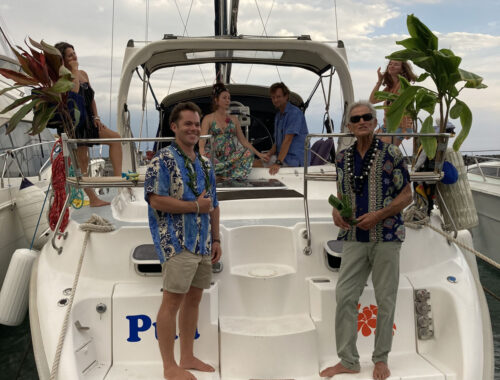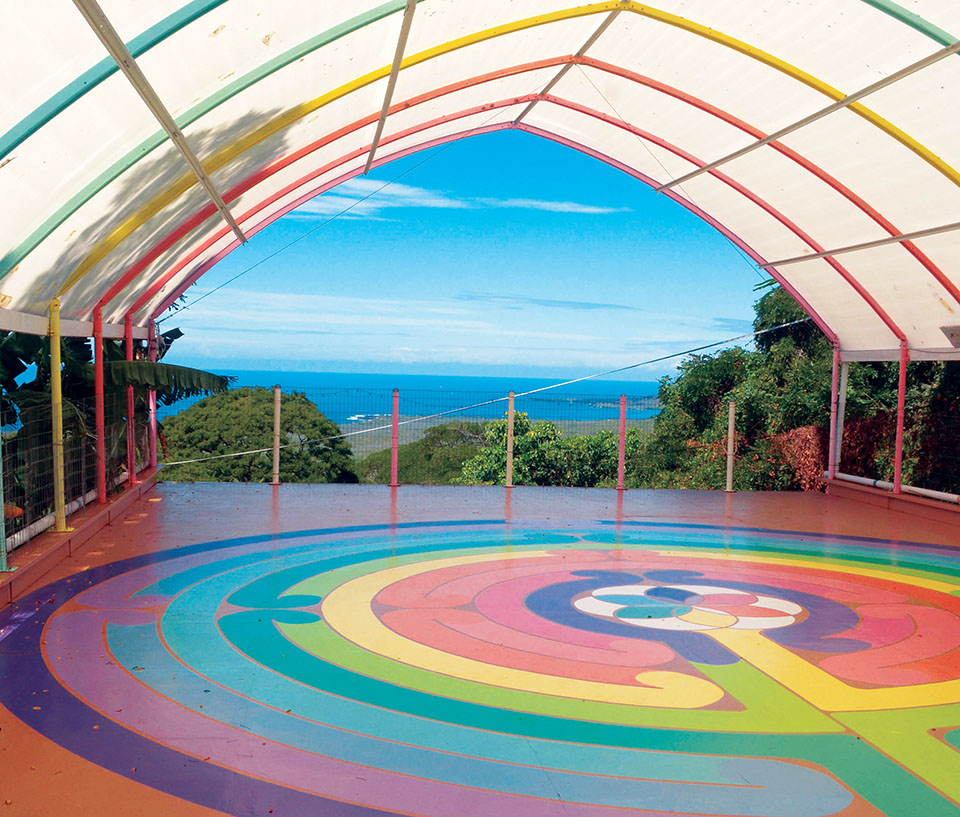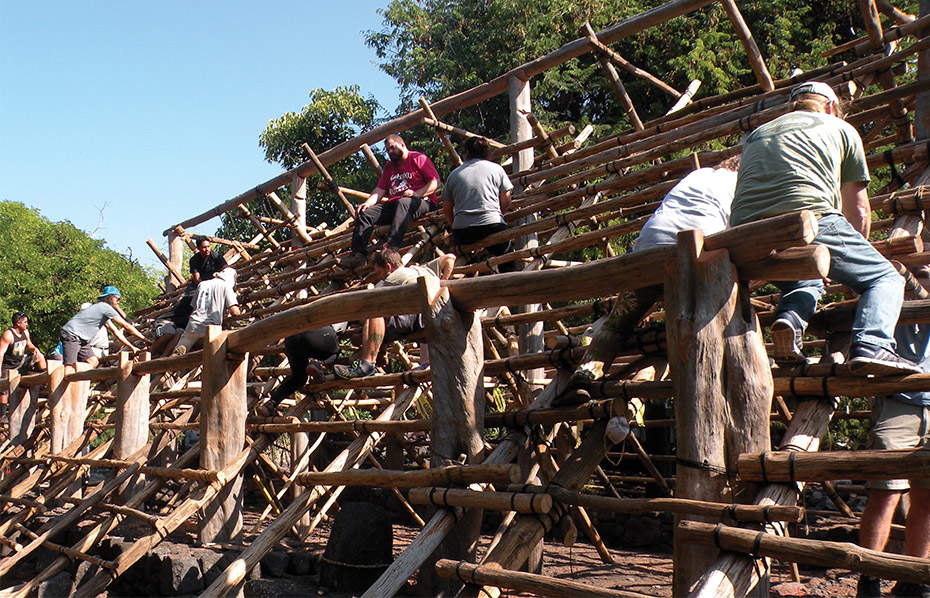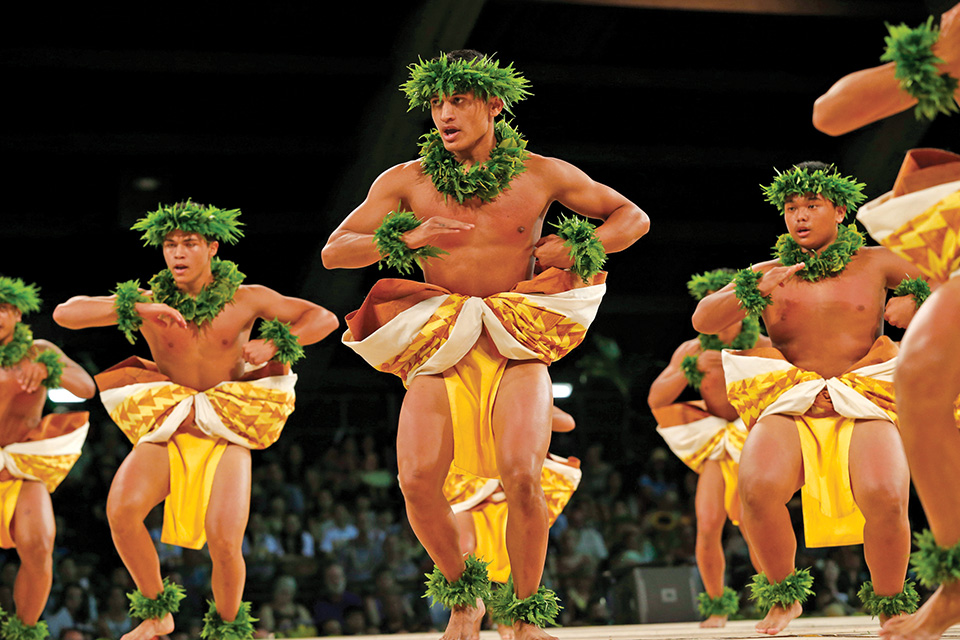
Invoking the Warrior: Hula Kane

By Karen Valentine
The line of kane (male) hula dancers lies in the shadows, poised to walk onto the Merrie Monarch Festival stage. Their kumu (teacher) takes his place behind the pahu (drum) and raises his arms along with his voice in a powerful oli (chant), calling the dancers to enter. The crowd erupts in shouts and applause as they burst into the spotlight. The kane dancers are always crowd favorites, especially when they perform powerful, primal kahiko dances with gleaming muscular bodies and athletic moves, choreographed in precision timing.
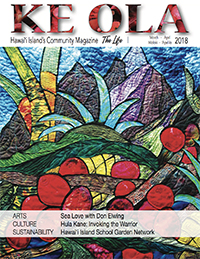
The Merrie Monarch Festival was born during the 1960s, an era when hula was predominantly female in the eyes of a public attuned to Waikīkī hula shows. The ancient arts, including hula kane, were to make their comeback during the Hawaiian cultural renaissance of the ‘70s. Uncle George Naope, co-founder of Merrie Monarch, was also a kumu hula who encouraged male dancers, so it was inevitable that Merrie Monarch include the competition category of Hula Kane. In 1978, the Men of Waimapuna, under Kumu Darrell Lupenui, was the first hālau (hula school) to win the Kane category, in both kahiko (traditional) and ‘auana (modern), and repeated the honors in several subsequent years.
The young Keala Ching, today a kumu hula and founder of Na Wai ‘Iwi Ola in the Kona district, performed in Lupenui’s winning hālau in 1986, when they swept all Kane categories with the highest total score ever. Their depiction of Moloka‘i warriors in battle and their introduction of malo-style costumes with minimal coverage set the standard for years to come.
“When I grew up it was that generation that really frowned upon men doing hula and people were not really versed in the culture,” says Kumu Keala. “My aunt was involved with an entertainment company in Waikīkī, and she asked me if I would like to participate. I started to learn basic hula, but I felt that wasn’t what I really wanted to do.”
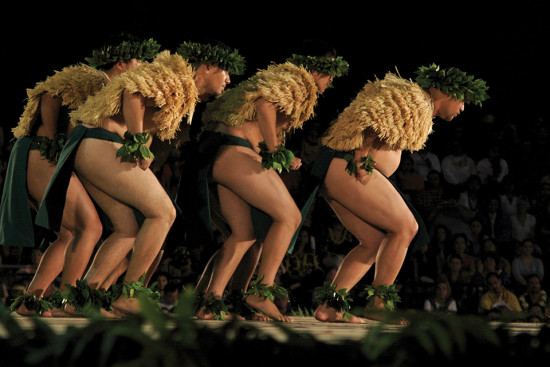
Kumu Keala attended St. Louis School, an all-boys private high school in Honolulu, and was fortunate to take a hula class with the famous kumu hula, chanter and Hawaiian cultural practitioner John Keola Lake. “That was my first connection with a hālau. Kumu John Lake taught hula in school and also had his own hālau after school. I was really excited about learning hula protocol.”
There were many kapu (taboos) associated with early hula training, going back centuries, some of which endure today, depending on the kumu and the tradition of his or her hālau lineage. Most involve preparing the body and spirit to “become” the hula, such as doing water cleansing ceremonies and gathering plants for costumes. Kumu Keala remembers one of the practices he learned while preparing for a high school competition with Kumu John, which was to not eat he‘e (octopus) before the dance. It symbolized “having the energy sucked out.”
A high school friend, Darrell Lupenui, was also a Waikīkī entertainer and at the same time one of the primary dancers for the Men of Waimapuna. “Kumu Darrell was well known at the time, and he had already won trophies at Merrie Monarch. In 1983 or ’84 my friend took me to a practice. I really loved it and I was accepted in the hālau,” says Kumu Keala.
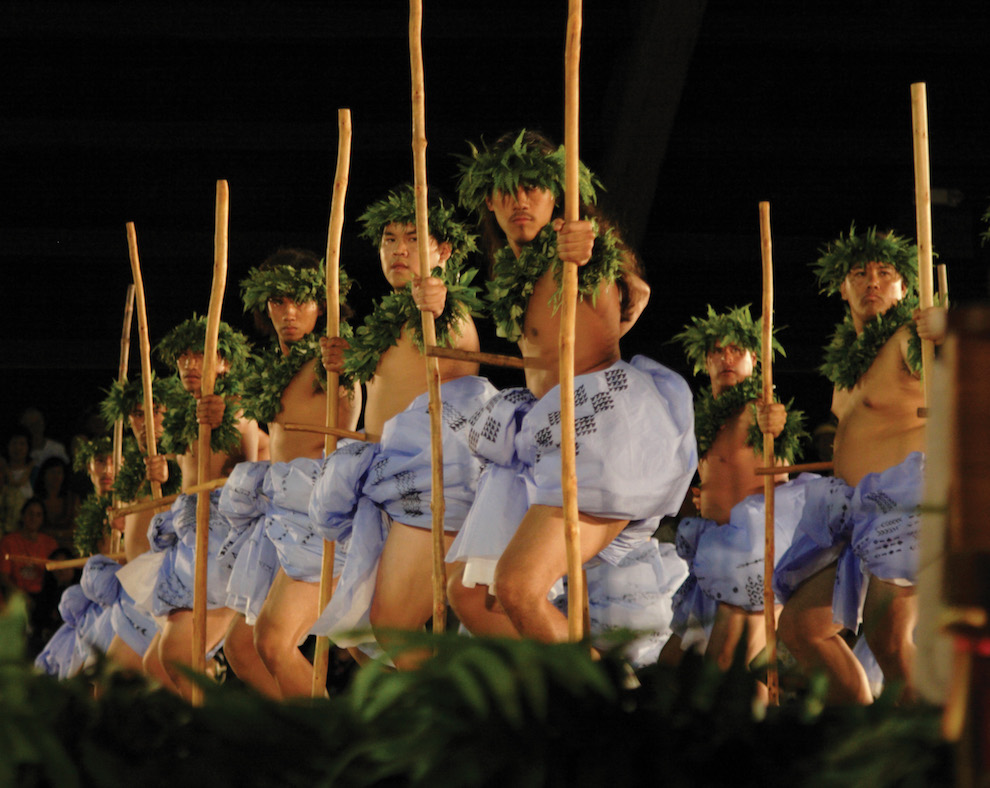
Gender Confusion
There is some confusion about the historic male and female roles in hula. Some say that hula dancers were originally only male. However, the ancient myths of the origin of hula involve dancing goddesses: Laka, Pele’s sister Hi‘iaka and her companion Hōpoe. When Captain Cook first visited Hawai‘i, his 1778 journals recorded seeing women dance on the island of Kaua‘i. His expedition artist, John Webber, made a drawing of a male hula dancer, which probably influenced outsider impressions of hula in that era.
Perhaps more significant than an understanding of gender is to first understand the important storytelling role of hula in Hawaiian culture, where history and tradition were recorded orally, using both words and gestures. Much more than entertainment, hula was an important aspect of the ceremonial practices in society by both men and women, such as honoring a monarch or occasion, festivals, temple prayers, and even as a discipline used in training warriors.
The art of lua is known as the Hawaiian martial art, practiced by warriors trained first in hula. It is said that warriors were chosen from the ranks of hula dancers, who learned steps and movements that were functional in battle, enhancing balance and strength.
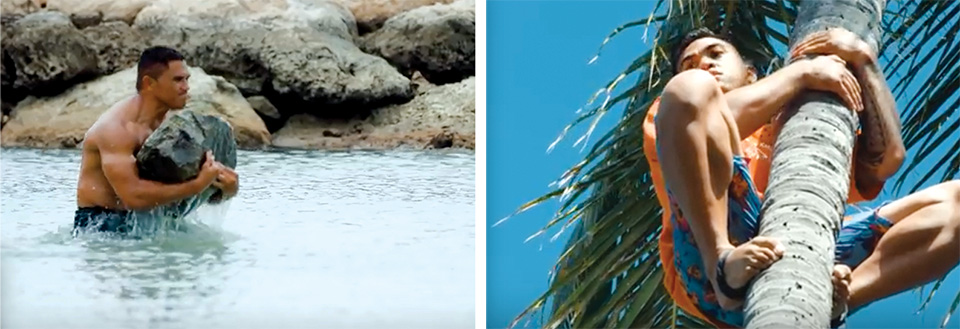
A hālau known for its warrior-like style, winning the Hula Kane categories from 2000 to 2011, is Ke Kai ‘O Kahiki from the Wai‘anae district of O‘ahu, originally under the direction of the late Kumu O’Brian Eselu.
The style of dance of this hālau is particularly dynamic and physically grueling, performed with exaggerated ‘ai ha‘a (squatting low to the ground) movements. Its body-sculpting training regimen appears more rigorous than boot camp, with routines including running laps, carrying large boulders and climbing coconut trees.
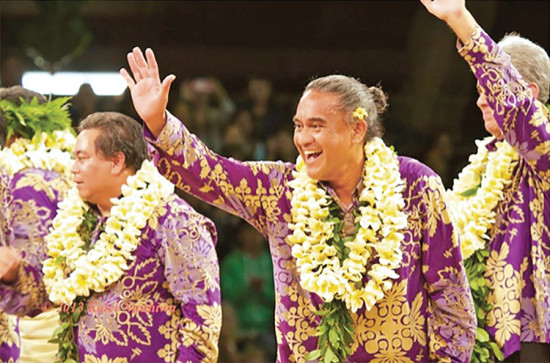
Another distinction in ancient times involved the fact that women were not allowed in the primary areas of the heiau (temple). It was the men who were designated as ceremonial temple dancers, practicing what is called hula ha‘a. The word ha‘a, as in the warrior-like dance, ‘ai ha‘a, means “humble.” Literally, ‘ai ha‘a means “eat humbleness.” It represents both strength and respect, qualities important in communicating with the deities or giving honor.
Another renowned kumu well versed in the warrior connection with hula was the late Kumu John Ka‘imikaua from Moloka‘i, an island with legends of powerful warriors who danced and chanted while defeating their enemies.
“John Ka‘imikaua camped at the beach near my home,” said Kumu Keala. “I sat down with him and gained insight about the ties between lua and hula. Most significant to me was that you needed to know the ho‘ola before you could lua. In other words you had to learn how to heal before you could kill. Bone breakers had to know how to break a bone and how to heal it. It was very profound for me to learn that.”
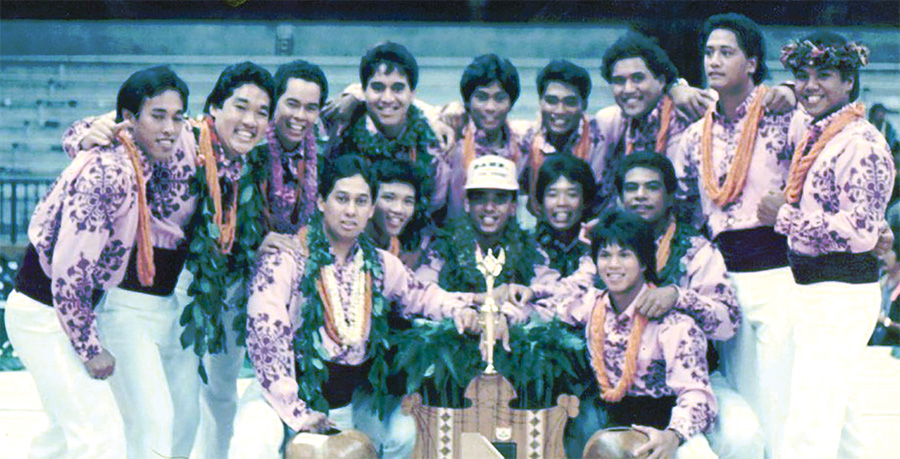
The winning hula kahiko performance for the Men of Waimapuna in 1986, under the direction of Kumu Darrell Lupenui, depicted the warriors of Moloka‘i. “Our performances that year—both female and male—honored warriorship. The wahine dance honored [goddess] Hina and the four winds. With the kane, we depicted warriors intertwined with Makahiki games and a love story. In our classes in hālau, we were mixed with women. We learned the stylistic differences with our movements and then we danced together. Darrell’s greatest quality as a kumu, I understand now, was humbleness, being able to receive that ‘ike (knowledge) and to impart it comes with being humble.” Kumu Darrell passed away in 1989.
The Next Generation
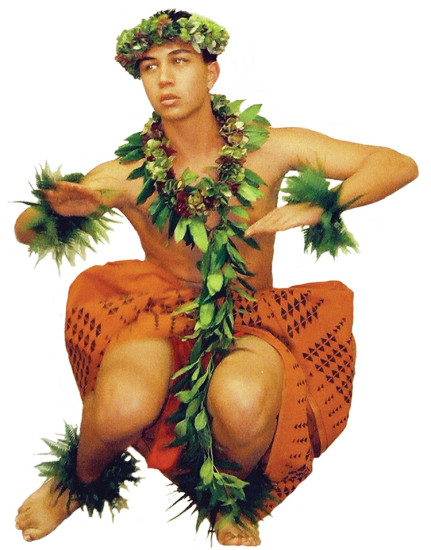
A hula practitioner in the next generation following Kumu Keala and his hula sisters and brothers is (Joshua) No‘eau Kalima of Hilo, who has been dancing hula since the age of four and is currently in training to become a kumu hula. He is representative not only of his current generation (in his 30s) but of the somewhat privileged position of growing up in a multi-generational hula family. When children—brothers and sisters—grow up together in hula, the prejudice of gender difference may not be so much of a factor.
“My kumu, Iwalani Kalima, of Halau Hula ‘O Kahikilaulani, is also my aunty. It’s in the family, therefore I’m always around it,” No‘eau says. The hālau, originally under the late Kumu Hula Ray Fonseca, won trophies during the late ‘80s and early ‘90s, then came back to win the Kahiko Kane category in 2016. No‘eau also danced in that performance.
“My formal training started at the age of four or five with Aunty Iwalani and also Kumu Ray Fonseca.” Both were trained under Kumu George Naope.
When he turned 13, No‘eau was invited to participate with Fonseca’s hālau in Merrie Monarch. “At the age of 13, I was the youngest performer. That first experience I’ll never forget. I continued with Kumu Ray and we later won first place in 2016 in Kane Kahiko. That moment was overwhelming because Kumu Ray had passed away, but it’s just the amount of community that supports us. It’s an out-of-body experience. It’s surreal.”

No‘eau is a recent graduate of University of Hawai‘i at Hilo in Hawaiian Studies, which he studied to better grasp his Hawaiian identity as a foundation to becoming a kumu hula. “Uncle George said hula has the ability to express one’s innermost feelings. I think that as a hula person connected to the surroundings, we call in both male and female energies. The female can pull up male energy and a lot of the kane dances require female energy, but it’s whatever the mele (song) is wanting to come across, how it wants to be expressed. You can do kane energy or wahine energy. When you do dances about our goddess Pele, it’s the same as warrior energy.”
No‘eau says that the men in his hālau are taught certain moves, such as the flat-foot ka‘o step. “It is very centered and grounded. It’s more like pulling the energy out of the ground. I am really fortunate to have had a kumu that’s female and one that’s male, but they come from the same lineage, so their teaching is kind of the same. There is a little softness in the female kumu and something more stern in the kane kumu. At the same time, Kumu Iwalani can pull out the other (powerful) side, and Kumu Ray could pull up the soft side.”
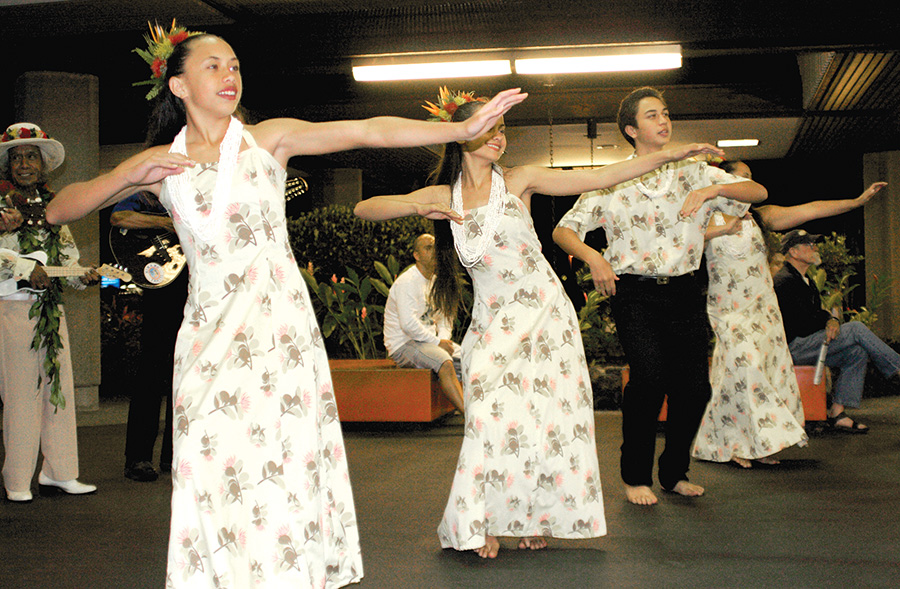
As both males and females practice the art of hula, they learn that the dance enhances one’s balance, both in the physical and the energetic sense. Both have the opportunity to express their masculine and their feminine side.
Competition in this year’s Merrie Monarch Festival in the Kane categories takes place on April 6 and 7, 2018. ❖
For more information: merriemonarch.com
Mahalo Kings’ Shops – Culture Story Sponsor
